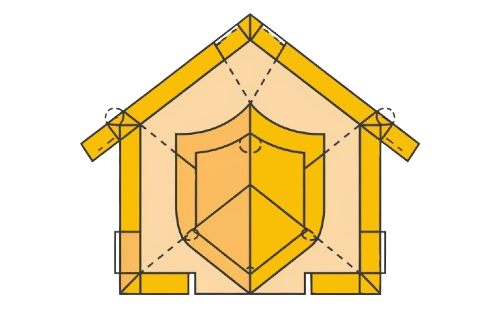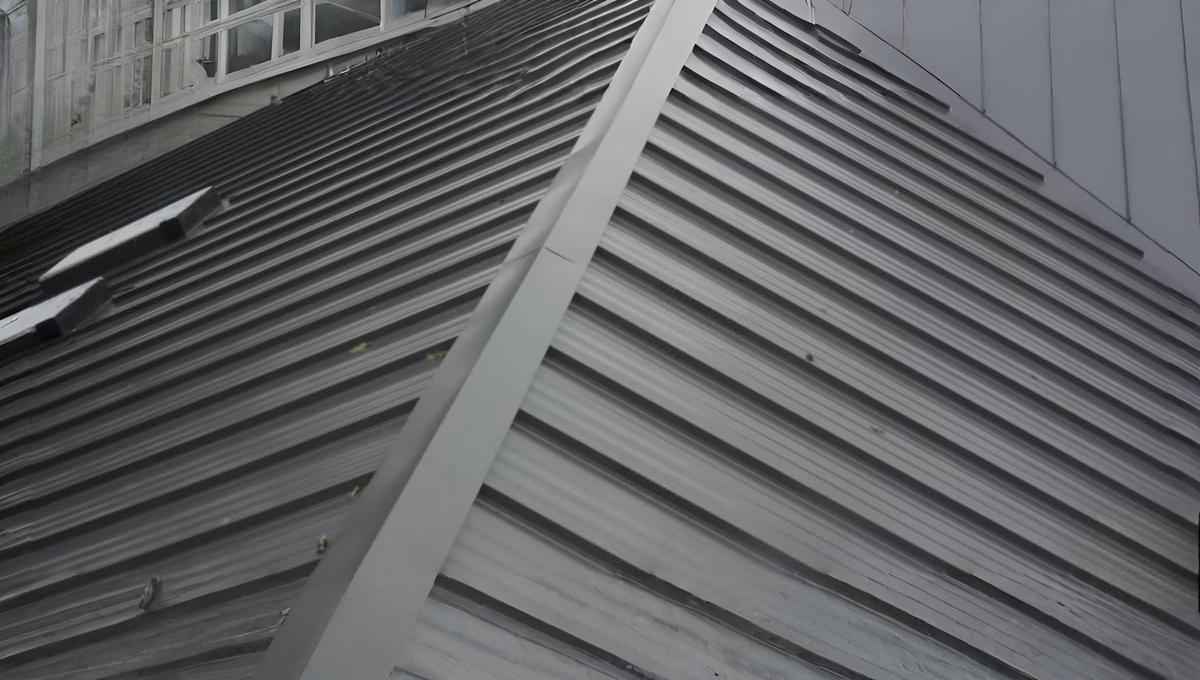Many people often overlook the importance of installing proper roof insulation when building or reconstructing houses. Whether you choose the best material or simply settle for something basic, insulation plays a crucial role in protecting homes from temperature fluctuations and improving energy efficiency. If you’ve already decided to insulate your metal roofs, it’s essential to consider several aspects before getting started. Choosing the right option requires an understanding of the process, whether you prefer a DIY project or hiring professionals to install the insulation.
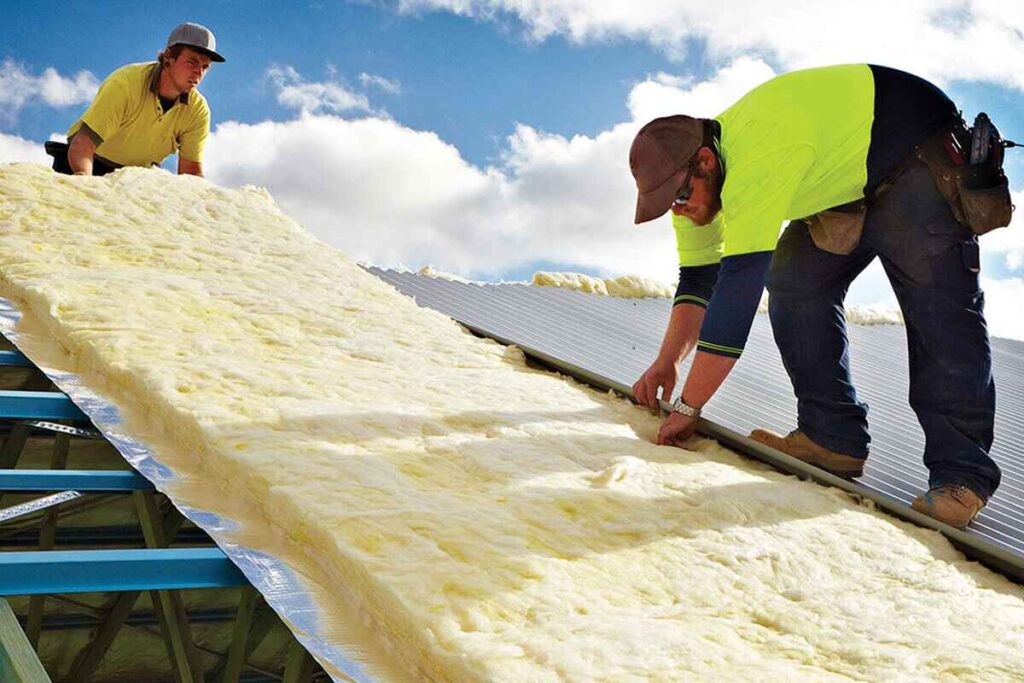
To get the best results, it’s important to evaluate factors like airflow, ventilating, and insulating techniques. Following the necessary steps can ensure that your roofing stays durable and effective. Many homes and buildings have hidden insulation that plays a significant role in comfort. The great looking exteriors of a roof may be seen from the outside, but the true work happens inside, where airflow control helps maintain temperature. This visual aspect is one of those behind-the-scenes things that truly makes a home comfortable. If not done properly, it won’t function as intended, leaving gaps in insulation. Here’s a simple guide to help with the process, whether you are asking for advice or planning a DIY project.
The Importance of Insulating Metal Roofs
If you ever wonder whether it’s truly worth the trouble to insulate metal roofs, the answer is a definite yes. It is highly recommended to add insulation because a roof alone is not enough to keep your house protected. Without it, your home can lose beneficial hot or cold air, making it harder to maintain a proper indoor temperature. Insulation helps to make a home more energy efficient, helping you stay warm during winter seasons and cool in summer. Installing the correct insulation not only improves comfort but also ensures effective temperature regulation. It also protects your home from harsh elements, including rain, snow, and intense heat. In addition, a well-insulated roof can reduce noise pollution, which is known to be a concern for houses with metal roofs, especially under heavy, fierce wind or when hailstorms hit.
A strong insulation layer reduces temperature fluctuations and moreover provides increased sturdiness, making it an excellent investment. It can also help homeowners pass commercial property inspection by eliminating potential roofing issues. Whether for residential buildings or commercial structures, insulation plays a role in conservation and improving the overall efficiency of a barrier against environmental conditions. It works not just for sound reduction but also to stop common problems like moisture, damp buildup, and losing R-Value over time. For regions with gusty winds, hail, and temperature extremes, having proper installation is important to maintaining a stable indoor environment. A vapor barrier is necessary to control condensation and prevent damage. By taking the right steps, you can stop these issues before they become costly repairs.
Important Considerations Before Insulating
Before insulating a metal roof, it’s important to consider several factors to ensure you get the best results. The process of buying insulation and selecting the right materials depends on your understanding of how different methods work. You need to choose the type of insulation that fits your needs, whether you’re going forward with a preferred method or exploring new options. Proper insulation provides many benefits, such as improved energy efficiency and protection against moisture. A well-thought-out plan will help prevent issues and make sure your insulation lasts for years.
Roof Condition
The roof condition plays a major role in determining how well insulation will perform. It can affect the way insulation functions and whether it remains effective over time. The kind of material you use should depend on whether you’re working with an existing roof or installing insulation on a new structure. If there are gaps, leaks, or structural conditions that allow air to escape, the insulation might become ineffective. Before starting, it’s best to look for any weak areas and make the necessary repairs first to ensure a well-sealed and durable roofing system.
Understanding Insulating Ability
Before insulating, it’s important to consider the ability of different materials to regulate temperature. The correct insulation can make a big difference in energy efficiency, but selecting the best option depends on multiple factors. The material should suit your specific needs, as there are many different materials available with varying R-values that impact resistance to heat flow. Depending on your location and climate, you should choose insulation that provides optimal thermal resistance. If you’re unsure about the minimum R-value required for your house, it’s always wise to ask insulation suppliers or professionals for guidance.
Budget Considerations
Your budget is another key factor when deciding on insulation. There are various types, some more expensive than others, so knowing exactly how much you’re willing to spend is crucial. If you’re constructing or reconstructing a house, insulation costs should be factored into your overall plan. Careful planning can help determine the best material, whether you should look for an affordable option or go for something high-end with better long-term benefits.
Experience and Equipment Requirements
Lastly, many people find themselves wondering whether they should attempt insulating on their own or hire professionals to get the job done. While both approaches can work, the process can be difficult and even dangerous if you’re not knowledgeable about the required techniques. Confident DIYers might feel comfortable tackling the project, but having the necessary equipment and safety gear is essential. If you’re uncertain, hiring professionals is often the best choice to ensure a proper installation.
Best Insulation Choices for Metal Roofing and Siding
When choosing the best insulation for a metal roofing or siding project, it’s essential to look at different options and consider key factors like energy efficiency and durability. Various materials are available, each suited for specific insulating needs. The right insulation can make a big difference in maintaining temperature control in a house while also improving the lifespan of the roof.
Insulating with Fiberglass Batts
One of the most affordable and commonly favored materials for insulation is fiberglass batts. Made from thread-like glass that is interwoven together with other materials, this option is versatile, making it easier to use for roof insulation. Many people prefer it because it can be cut and shaped to fit different structures. Additionally, it is environmentally friendly, as it is usually made from recycled materials. However, while fiberglass batts offer fire resistance and help prevent collapse, they also have some negative concerns. They contain microscopic glass bits that can be damaging to the hands, eyes, and lungs if protective gear like PPE is not used. Professional installation is often recommended, as improper handling can lead to permanent damage or an ineffective insulation layer.
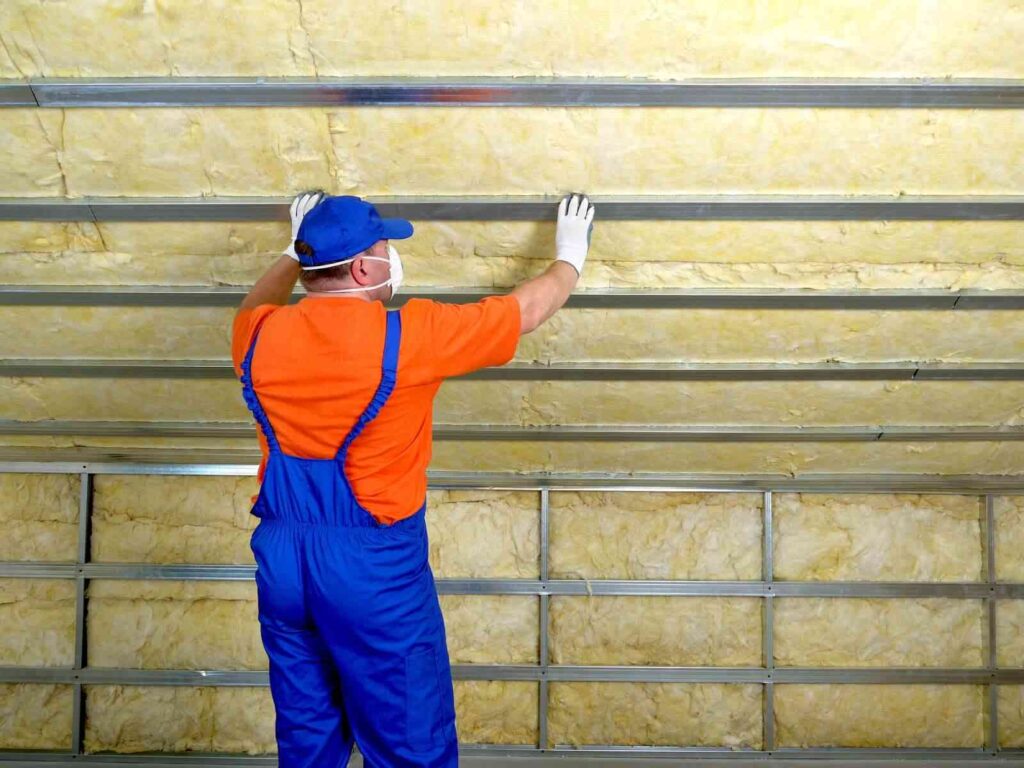
Rigid Board Insulation for Maximum Efficiency
For those looking for a durable and highly resistant option, rigid board insulation is a preferred type for metal roofs. This material is typically used to provide thermal resistance for foundations, roofs, and walls. It is made in sheets or panels of various sizes and thickness, with options like polystyrene, polyurethane, and expanded EPS. Some variations, like extruded boards, come in pink or blue and are denser, offering a better R-value, such as 4/inch for EPS and 5/inch for extruded foam.
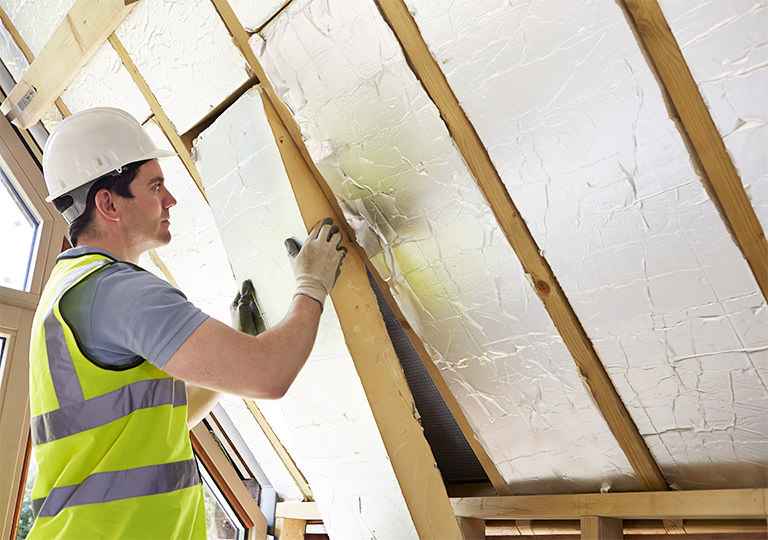
One of the biggest advantages of rigid boards is their ability to be fitted tightly, with joints caulked or sealed using tape to offer maximum efficiency. However, it is absolutely essential to ensure proper moisture control, as gaps in installation can lead to damage over time. These boards are also water-resistant, making them a great barrier beneath siding or over foundations. Unfortunately, the installation can be a challenge, especially in tight corners or awkward areas, and exposure to UV rays may cause degradation. To avoid these issues, it’s best to ensure all boards are installed correctly and fully sealed.
Insulating with Spray Foam
When insulating a metal roof, many homeowners consider spray foam as an optimal solution due to its effective sealing properties. This type of insulation is not D.I.Y. friendly, as it requires professional expertise and specialized equipment for proper installation. The material is mixed with water and applied using a high-pressure machine as a heated liquid. Once the mixture reacts with oxygen in the air, it dries, leaving the remaining polyurethane to expand, harden, and cure within minutes. This self-adhering insulation can easily cover difficult surfaces, including corners and awkward areas, preventing missed spots that could lead to R-Value decreasing over time.
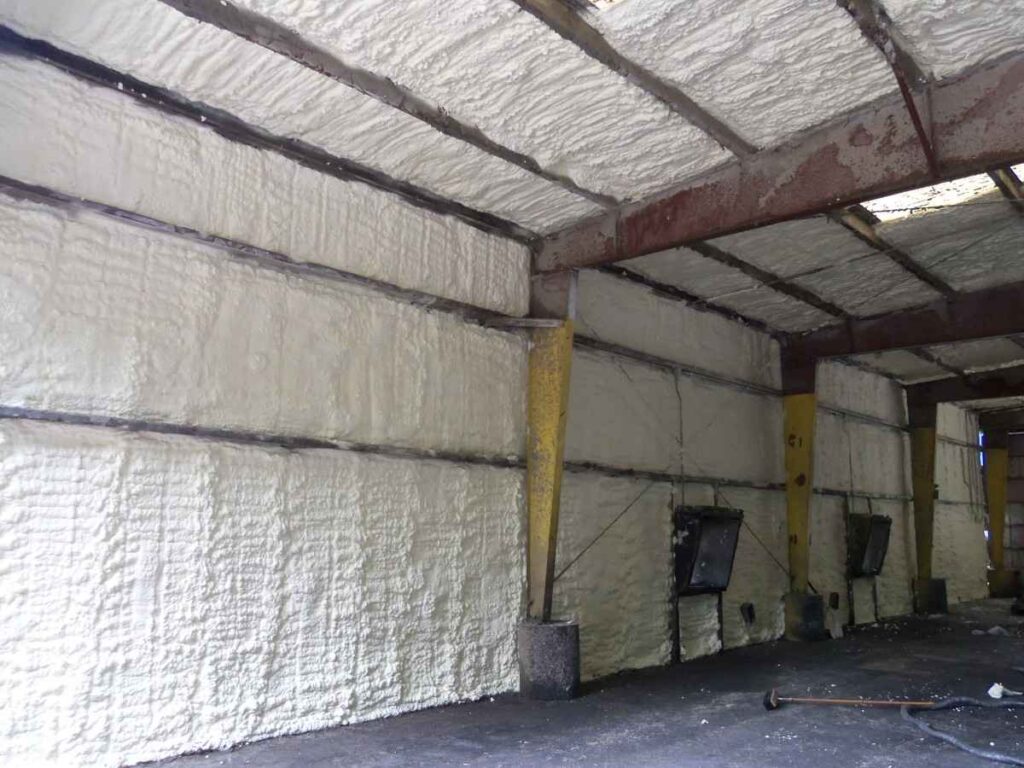
A common question many ask is, is spray foam insulation safe? While it offers excellent insulation, it can be dangerous to apply on your own without proper safety gear. The process involves the use of chemicals that, if inhaled, can cause health risks. This is why it’s always best to hire professionals who have the proper skillsets to perform installation safely. Additionally, spraying foam acts as a barrier that prevents condensation buildup and protects against rodent and insect infestations. Before undertaking this method, it’s essential to check compatibility with the existing roof structure. There are two-part foams available: open-cell and closed-cell. The former is more flexible and expands easily, while the closed-cell variant is stronger and does not allow moisture to pass through. Choosing the better option depends on your insulation needs and the specific conditions of your roof.
How to Insulate a Metal Roof
Key Steps for Insulating a Metal Roof
To properly insulate a metal roof, you need to have a clear plan and understand the factors involved. Whether you have chosen to insulate a new or existing structure, knowing what kind of insulation to put in place is crucial. The process can be quite different between structures, and selecting the best insulation—whether fiberglass batts, spray foam, or rigid boards—depends on your specific needs. Once you understand the requirements, you can begin preparing the surface and following the proper installation steps.
Preparing the Roof for Insulation
Before you begin, you must prepare the surface. The first step is to ensure that the roof is clean and free of dirt and debris. Before installing anything, wash the area thoroughly to prevent any material from getting stuck under your roof. A clean surface ensures the insulation adheres well and functions properly.
Installing Plywood and House Wrap
After cleaning, it’s time to install plywood for added stability. This should be placed perpendicular to the rafters and secured using nails to keep them in place. Once the plywood is installed, you will add house wrap or building paper to protect the insulation from moisture. Use staples or nails to secure them properly. This helps lessen the risk of leakage and moisture damage over time.
Adding a Vapor Barrier
To further protect your insulation, you should install a vapor barrier. This involves using a polyethylene sheet or a specialized material to prevent moisture from reaching the cooler metal surface, which can cause condensation.
Ensuring Ventilation
Proper ventilation is also essential—installing ridge vents or soffit vents allows airflow to circulate, helping to reduce moisture buildup inside the structure. If you’re using rigid insulation, it’s important to use baffles to maintain air circulation between the insulation and the roof.
Installing the Insulation and Sealing the Seams
Once the roof is prepped, you can install the foam boards by placing them on top of the plywood and house wrap. The number of layers you need will depend on the insulative power required for your house. Ensure the boards are pushed together but do not overlap. After installing the insulation, it’s time to seal the seams. Use strong duct tape to strengthen the rigid board and minimize air and moisture leakage.
Final Steps: Installing the Metal Roof
The final step is to install the metal roof. Once the insulation is in place, all that’s left is to secure the roof panels. Make sure to follow the manufacturer’s instructions or hire a professional to help with the installation. A properly installed roof will enhance durability and provide long-term insulation benefits.
Maintaining Insulation and Monitoring Humidity
To keep the insulation effective, it’s important to fit insulation tightly so that it snugly sits against the roof, reducing thermal bridging and moisture condensation. Using a hygrometer can help monitor humidity levels inside the shed, and if moisture levels are too high, consider using a dehumidifier. Additionally, it’s crucial to inspect for moisture regularly and check for signs of accumulation, mold, or leaks, especially after heavy rains or snow.
Insulating an Existing Metal Roof
When insulating an existing roof, using fiberglass batts or rigid foam is often recommended. These materials, when used together, create an effective insulation system that helps regulate temperature and reduce energy loss. Fiberglass batts are a great choice for trapping heat, while rigid foam provides a strong barrier against moisture. Choosing the right combination ensures a well-insulated metal roof that can withstand different weather conditions.
Inspect the Roof Structure
First, look at the underside of the metal roof. Check the plywood sheathing, which is composed of horizontal beams, known as purlins, and the larger slanted beams, called jousts. Inspect these structures for any damage before proceeding with the insulation process. A strong base is essential to ensure the insulation holds properly and lasts for years.
Install Fiberglass Batts
To begin, place fiberglass batts in the gaps between the purlins and sheathing. Remember not to make the batts too compacted, as this can make the insulation less effective. Instead, fit the material as loosely as possible to maintain proper airflow and insulation performance. Properly installed fiberglass batts provide an extra layer of protection against temperature fluctuations.
Install Rigid Board Insulation
Lastly, cover the broader range of the roof sheathing with rigid board insulation. Carefully cut the sheets to the appropriate size, and use staples or strong adhesive to keep them in place. This additional rigid foam board insulation strengthens the roof and creates a long-lasting, energy-efficient barrier against external conditions.
Spray Foam
Preparing the Insulation Area
Before applying spray foam, it is important to prepare the insulation area properly. Start by covering all surfaces where the foam might drop onto using tarps or other protective materials. The product is difficult to remove, so taking precautions will make cleanup much easier. Also, ensure the area is clean by removing any dirt or dust before starting. Using a tarp first will prevent unnecessary mess and help in achieving a smoother application.
Spraying the Material
When you spray the material, make sure to keep the nozzle about 6-8 inches away from the metal roof for even coverage. It is also essential to ensure joints are covered well to avoid any gaps. If you are doing this on your own, remember that you should wear a respirator and other protective equipment to avoid inhaling harmful chemicals. Spraying foam without proper safety gear can be risky, so taking necessary precautions is a must.
Allowing It to Harden and Cure
Once applied, the foam needs time to harden and cure. You should allow it to settle for around 8-24 hours before moving around the area where it was applied. This step is crucial to ensure that the insulation sets correctly. Since the chemicals in spray foam can be dangerous to inhale, it is best to stay away from the site until the curing process is complete.
Final Thoughts
Insulating a metal roof can help make a house or shed a better living space by maintaining a stable indoor temperature and improving energy efficiency. When considering different factors and options, following the right instructions is essential. Once you’ve decided on the best insulation, selecting the right materials and ensuring proper ventilation will enhance performance. Creating an effective vapor barrier can significantly reduce the risk of condensation and protect the inside environment from moisture damage. Using the correct techniques to install insulation will keep the structure durable. By following a clear guide, you can get through the entire process smoothly and ensure long-lasting results.
FAQ
What is the Best Insulation for a Metal Roof?
The best insulation depends on your needs and budget. Fiberglass is less expensive and easy to cut, but it sheds tiny shards of glass, making it dangerous to use without proper protective equipment. Spray foam is more energy-efficient but can be tricky to install without professional help.
Can You Put Insulation Directly Under a Metal Roof?
Yes, rigid foam board is a great insulation option for exterior roofing. It is not placed on top of the metal roof but underneath, providing good soundproofing and making it one of the best insulators on the market.
Do You Need an Air Gap Under a Metal Roof?
Yes, air gaps are essential components in metal roofing systems. They improve functionality and durability by allowing proper ventilation and circulation between the roof and the underlying structure. This helps to prevent moisture buildup, regulate heat transfer, and ensure the longevity of the roof.
How to Insulate an Existing Metal Building Roof?
A common method for adding insulation to a metal building roof is using a banding system. This involves securing steel bands, typically 1” wide, which are screwed under the side purlin at 30” apart, creating a grid. The spacing and setup may vary depending on the manufacturer to ensure proper insulation coverage.
